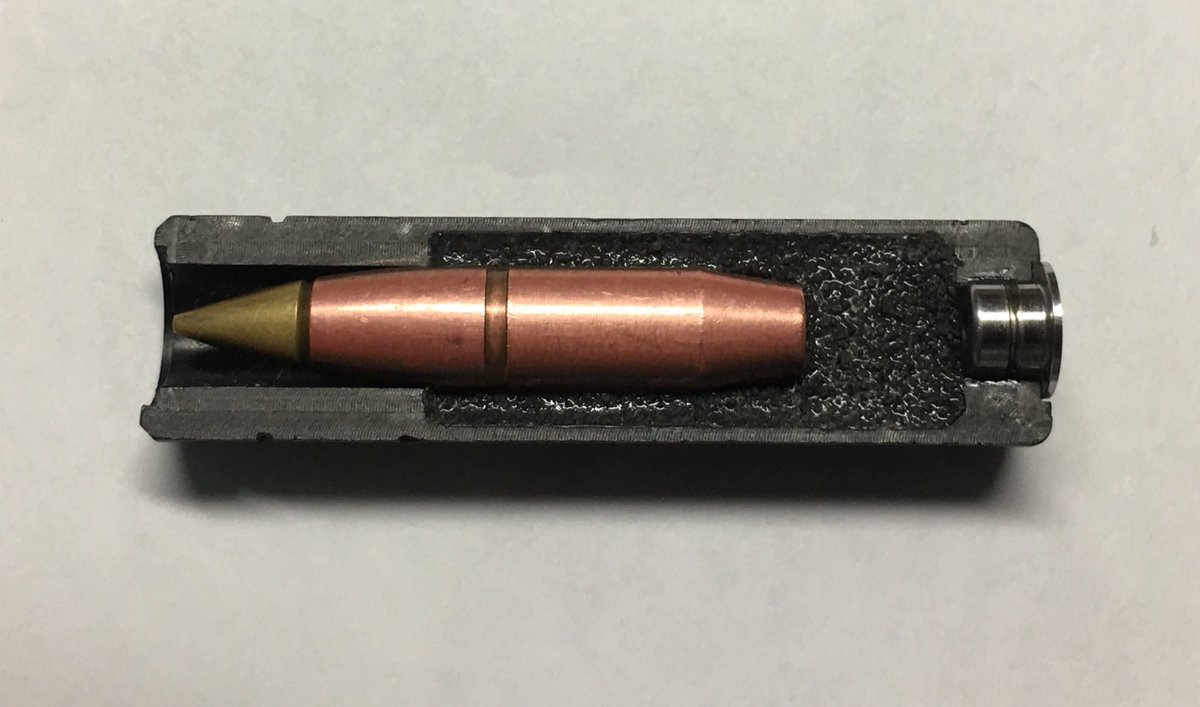Homemade telescopic 7.62mm rifle rounds

The concept of a telescopic round of ammunition dated back to 1895 with the Nagant Revolver and later auto canon or the SP-4 cartridge used on PSS Vul pistol. I read about it around 2010s but didn't think much of it until now, I realize that's a viable alternative for homemade ammunition:
- Chamber can be a straight tube, no taper required
- Easier to design magazine
- Doesn't have a projectile poke out will simplify feeding mechanism
- Plastic pipes are easy to obtain in various sizes
- Doesn't look like conventional ammo, lay low from the prying eyes
Concept:
The main body made from 12/10mm OD/ID PVC tubing. With the rear plugged with a primer/igniter system
10/8mm OD/ID PVC tube then nested inside to form a throat. Bottle neck helps boost the projectile to higher muzzle velocity
Making the rounds
Projectile
First we design our projectile. Dimension of the whole cartridge is based on the projectile caliber and characteristic.
In this writing I'll be using warsaw pact 7.62mm - they are larger than NATO counterpart by ~0.1mm in diameter
7.62mm barrel rifling has the groove diameter of 7.92mm - close to 8mm.

 |
| Disclaimer: Different 7.62mm caliber has different Groove diameter. For
example, a 7.62x51 NATO barrel has the groove diameter of 7.82mm |
The projectile made from 2cm long, 7mm diameter mild steel

The length of a projectile depends on the twist rate of your rifling.
The higher the twist rate, the longer and heavier your projectile need
to be (and vice versa).
A typical AKM has a twist rate of 1:240mm
The steel core then rolled in paper to form a jacket, increase the diameter to 8mm. Upon firing, the paper jacket will deform to grip the rifling and create a gas seal.

Paper jacket could be crimped inward at the front to improve ballistic coefficient 
Casing
The rear is filled with Epoxy to form the case head
A thin layer of paper tissue prevent Epoxy from running down to the rest of the case length

To the test range
Rounds are fired from a 15cm fully rifled barrel with a PET bottle attached to mask sound signature.
Target was a 49mm thick block of wood
Distance between muzzle and target is aprox 40cm. Enough to show if the projectile was keyholing

The result is full penetration of the target. A nice round hole indicated that stable ballistic is achieved
A piece of paper jacket stay embedded in the exit hole
Test fire into a tree stump under the same condition yield ~2cm of penetration

A piece of paper jacket retrieved after being fired shows rifling imprint
Future improvement
The casing shows cracks along the hull. This is the norm with PVC pipes. I could run the 8/10mm PVC tube for the whole length instead of just the neck to mitigate case cracking, but that will not create the bottleneck effect, thus reduce muzzle velocity
Case
head separation is a repeating concern. I'm not sure why but the casing
at the epoxy base kept breaking off after shot was fired (despite breech lock integrity was fine), gas will then
escape from the breech gap.
Albeit not a grave danger, having hot gasses spraying on your forearm is not comfortable in any way :)

Use aluminum jacket instead of paper: 8mm aluminum tube are available in hardware store. A steel core can drop in perfectly. They are soft enough to deform to engage the rifling, while provide extra resistant against environment element

Alternative option: As standard AK, PKM and Tokarev projectiles (not the whole live cartridge) are uncontrolled item and can be obtained, I might just use that to reduce work load,consistency and improve ballistic characteristic.
 |
| image stolen, those are not mine |
For now 2 lead wires are used to control the e-match inside the round, that is fine for single shot platform, however in auto loader realm, that's another story.
Update:
Use this cartridge on my newly made rifle with a 55cm barrel give it enough energy to fully penetrate almost 120mm of wood (I know, it's 119mm. But an extra millimeter won't make much of a difference)

After going through all that, it still retain enough power to smash the wall behind it
Didn't even deformed. This shit has some serious armor piecing capability!


















Comments
Post a Comment